Rewilding the Galapagos: Jocotoco Is Bringing Back Lost Species
Galapagos. Close your eyes for just a moment. What images does the name conjure in your mind? Primordial forces: volcanoes, evolution. Bizarre creatures, blue waters teeming with life. Nature—untamed, isolated, and unspoiled by humans.
For millions of years, this is how the islands looked. Just as volcanic activity continuously shaped them, life on the islands took its own course, and evolution created a completely unique ecosystem, as it often does on remote islands. This remained the case for millennia until the first humans set foot on the islands in the 16th century. Sporadic visits by pirates and whalers were enough to take a terrible toll on the ecosystem. As with most islands, the Galapagos suffer from invasive predators introduced both deliberately (goats and other domesticated animals) and unintentionally (rats and mice). These invasives have decimated local populations of birds and other wildlife. Hunting by whalers and pirates over the centuries disrupted the ecosystem’s balance and wiped out many endemic species.
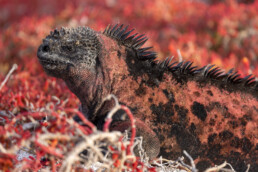
Pink Land Iguana, Marlon del Águila
Today, our partner Jocotoco has an ambitious plan to restore the beauty and diversity of the Galapagos Islands for future generations, harnessing the ecological superpowers of a tortoise species once thought extinct. The rewilding of the Galapagos island of Floreana, will make it the largest tropical island ever to be rewilded!
First Step: Removing Invasive Species
The first step was removing invasive predators from the island, which was accomplished toward the end of last year. This was no easy task. Eradicating invasive species like rats, mice, and feral cats on a 173 km² island is a monumental challenge, but it was successfully completed thanks to the tireless efforts of Jocotoco, the Galapagos National Park, and many local and international partners.
“Invasive species are destroying our island. They devour crops and are pushing our seabird populations to the brink of extinction. We catch less fish every year. By removing invasive species, we have the opportunity to restore both the land and the sea and provide more ecotourism opportunities for the first time on an inhabited island in the archipelago. Our livelihoods, our health, and the next generation’s future depend on it.” —Max Freire, Floreana Island native and fisherman
“Every action has a reaction, and it has been well-established that removing invasive species from islands paves the way for ecosystem recovery.” —Chad Hanson, Deputy Vice President of Conservation at Island Conservation (source)
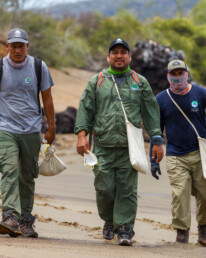
Park rangers working on manual bait dispersion during the invasive species eradication phase. – Photo by Joshua Vela
Next Step: Reintroducing Lost Species
“Rewilding is a key concept in this endeavor, as it involves returning these species to their natural environment—a crucial step toward revitalizing a healthy and balanced ecosystem.” – Jocotoco website
With the invaders gone after 150 years, it’s time for the most exciting part of the rewilding process: bringing back the lost species! Our partners at Jocotoco aim to reintroduce 12 of the 13 locally extinct species to their natural habitat, including the Floreana Giant Tortoise, Floreana Mockingbird, Little Vermilion Flycatcher, Galapagos Rail, Lava Gull, Galapagos Hawk, Vegetarian Finch, Gray Warbler Finch, Sharp-beaked Ground Finch, Large Ground Finch, Barn Owl, and the Floreana Racer Snake.
Earlier this year, more than 500 Darwin’s Finches were released on Floreana Island. The birds are successfully returning to their natural territories! Though small, their presence has a large impact: they pollinate, disperse seeds, and control insect populations.
“We’ve planned this moment for so many years; it’s surreal to experience it. The release of these finches marks a monumental moment for the future of Floreana.” – Paula Castaño, from Island Conservation (source)

Large Ground Finch by Jocotoco
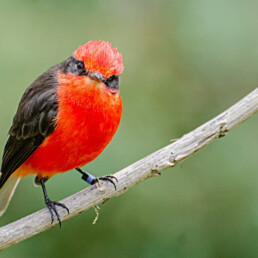




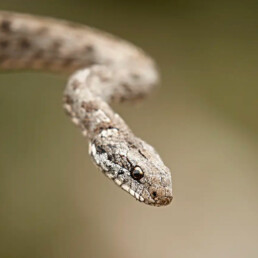


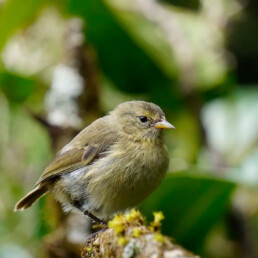

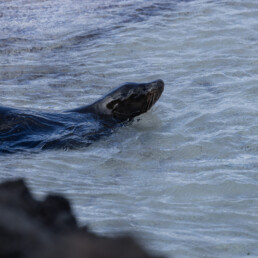

The Ecological Engineers Are Returning
The Floreana Tortoise went extinct over 150 years ago, likely during the 1840s or 1850s. By the time Charles Darwin famously visited the Galápagos Islands in 1835, decades of overharvesting had already brought the population to the brink of extinction. Darwin noted that only about 20 years’ worth of harvestable tortoises remained. The species finally disappeared around 1850.
Fortunately, in 2012, several hybrids between the extinct Floreana Tortoise and Chelonoidis becki, another subspecies, were discovered near Wolf Volcano on Isabela Island. These were likely descendants of Floreana tortoises transported there in the early 19th century. In 2017, a breeding program was launched to revive the Floreana subspecies. By 2023, the program had successfully produced around 400 offspring, offering a unique opportunity to repopulate Floreana Island with tortoises that closely resemble the genetic makeup of the original Floreana Giant Tortoise.
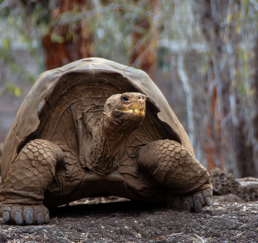
Photo by Diego Bermeo, DPNG

Galápagos Tortoise, Josgua Vela
The return of the tortoise to Floreana will be more than a symbolic victory. The tortoise will serve as an environmental engineer, transforming the island to benefit other endangered species. Not only do they disperse seeds and move soil, but they also “terraform” the habitat by consuming large amounts of lower vegetation, opening up the understory for foraging by species like the endangered Floreana Mockingbird and Little Vermillion Flycatcher. Jocotoco’s work in the Galapagos represents a unique conservation opportunity with lasting consequences for Floreana and the preservation of Earth’s biological treasures.
“This restoration project yet again demonstrates the importance of coordinated efforts between institutions and organizations dedicated to conserving the Galapagos Islands. Large-scale projects like this can only achieve positive results when all conservation stakeholders pool their knowledge, efforts, and collective experience.” —Rakan Zahawi, Executive Director of the Charles Darwin Foundation (source)
Time to make a real impact
This work might be expensive and challenging, but it’s worthwhile! The 160 people who live on Floreana have already seen their crop yields increase dramatically with no rats or mice around. The return of tortoises and birds will bring increased tourism revenue, a win-win for both people and wildlife.
At ICF, we’re thrilled to support Jocotoco’s work in Floreana, and we’re eager to invite you to join us. Support Jocotoco’s work in Floreana through ICF, and let us know if you’re interested in joining an ICF trip to the Galapagos in 2025! Jocotoco’s tour company, Jocotours, offers a unique opportunity to see this incredible work firsthand.
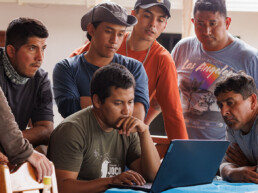
Juan Pablo Mayorga (Jocotoco Foundation), coordinating work with Biosecurity Agents (ABG) Photo by Joshua Vela

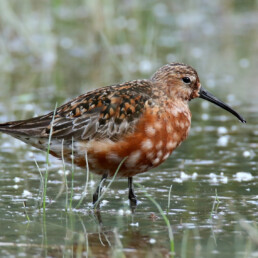
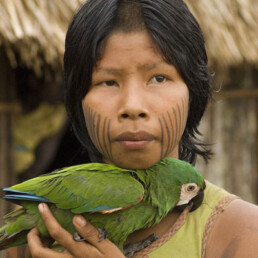
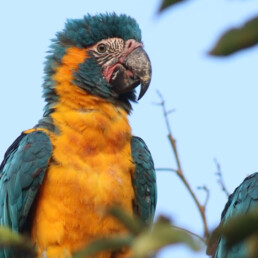
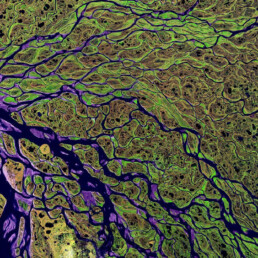
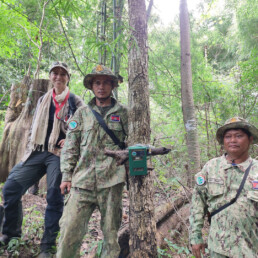
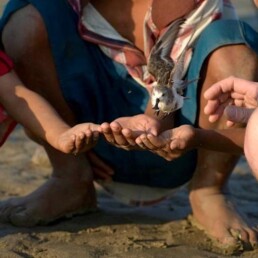
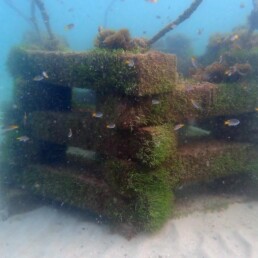
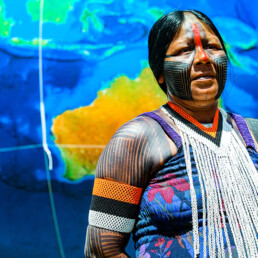
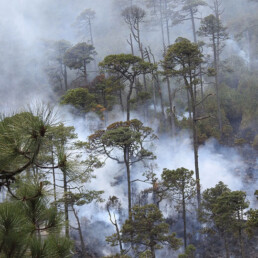
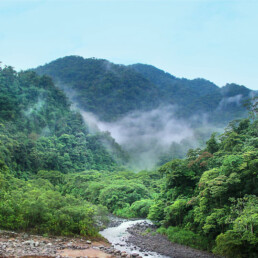
Hey people!!!!!
Good mood and good luck to everyone!!!!!